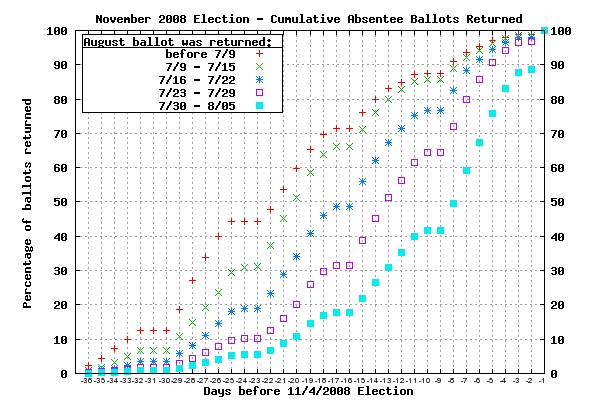by: Grebner
Sat Nov 15, 2008 at 00:16:58 AM EST
It probably shouldn’t be a surprise, but I had never looked at the question before. I looked at all the voters listed by the Secretary of State as applying for an absentee ballot at least 30 days before the August 2008 primary and again 30 days before the 2008 November general election. I discarded anybody who failed to return either ballot. That left me with over 200,000 cases to examine.
The results were very clear:

As you can see (assuming my graphic actually loads!) people who returned their ballots promptly in August were much more likely to return them quickly in November also.
Pearson’s r was about 0.47, but that understates the strength of the phenomenon, since presumably performance in both elections is actually driven by a hidden variable, and not directly to performance in the other election. What I’m trying to say is that if we build an average response time from a large number of elections, the regression onto either of the elections I looked at in this example should approach sqrt(.47) or about 0.69 or so.
The practical point – for the two of you who are still reading – is that it probably makes sense in large campaigns to target absentee voters differently according to how quickly they typically vote, with mail and other contacts aimed first at the quick responders and then shifting over time to the slow-pokes.
Leave a Reply to Violet Cancel reply